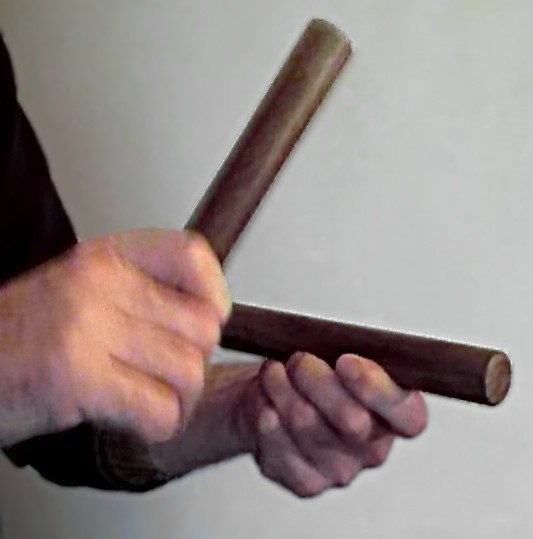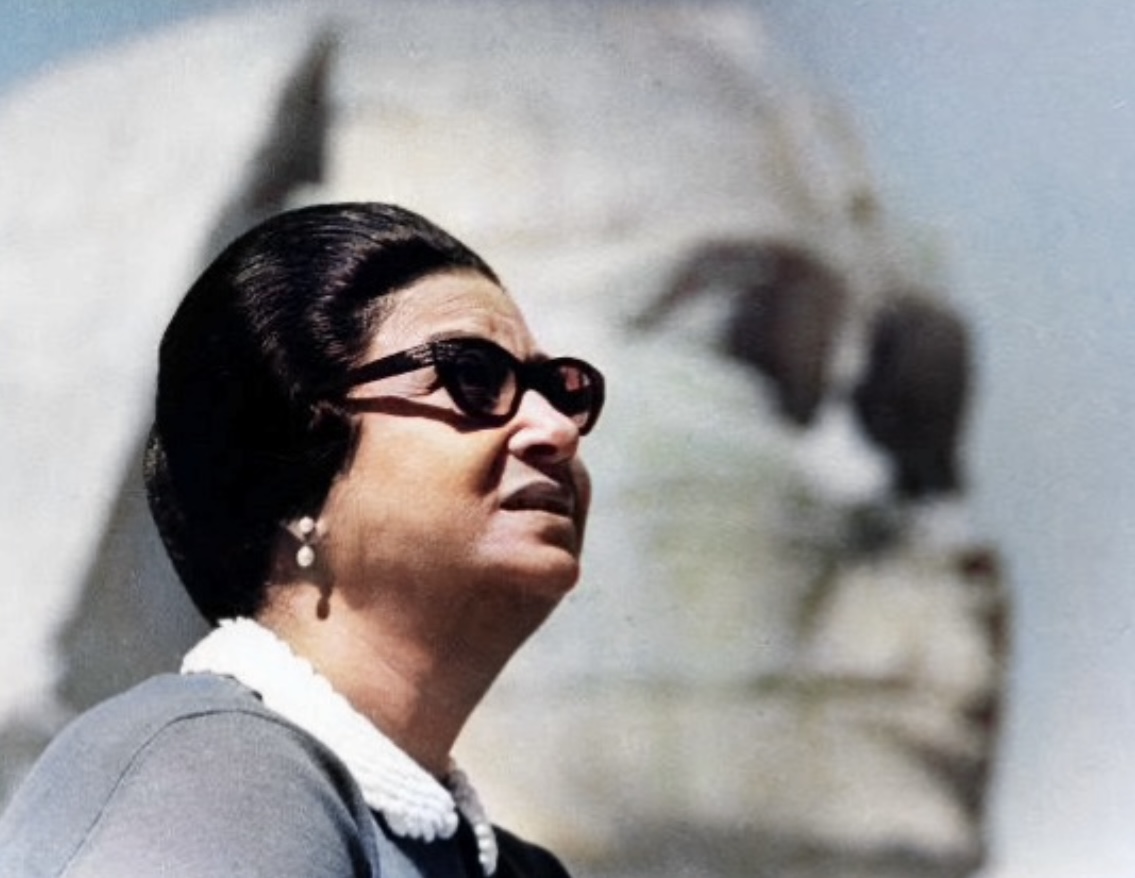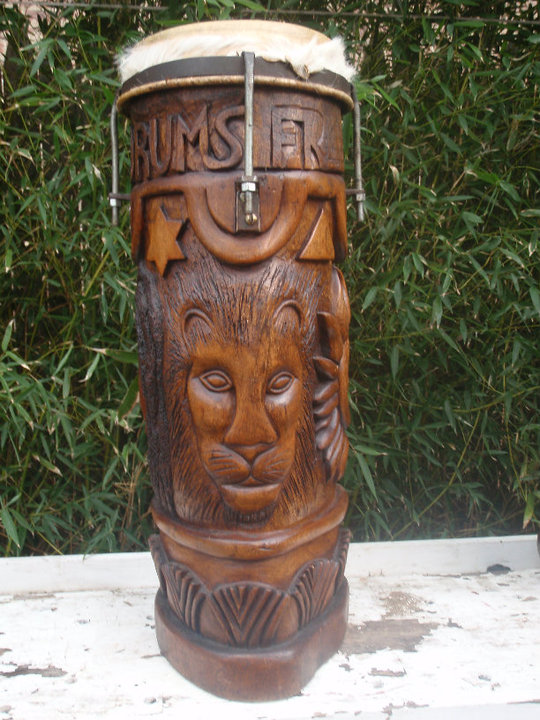|
Danzón
Danzón is the official genre and dance of Cuba.Urfé, Odilio 1965. ''El danzón''. La Habana. It is also an active musical form in USA and Puerto Rico. Written in time, the danzón is a slow, formal partner dance, requiring set footwork around syncopated beats, and incorporating elegant pauses while the couples stand listening to virtuoso instrumental passages, as characteristically played by a charanga or típica ensemble. The danzón evolved from the Cuban contradanza, or habanera ( 'Havana-dance'). The contradanza, which had English and French roots in the country dance and contredanse, was probably introduced to Cuba by the Spanish, who ruled the island for almost four centuries (1511–1898), contributing many thousands of immigrants. It may also have been partially seeded during the short-lived British occupation of Havana in 1762. Haitian refugees fleeing the island's revolution of 1791–1804 brought the French-Haitian kontradans, contributing their own ... [...More Info...] [...Related Items...] OR: [Wikipedia] [Google] [Baidu] |
Contradanza
''Contradanza'' (also called ''contradanza criolla'', ''danza'', ''danza criolla'', or ''habanera'') is the Spanish and Spanish-American version of the contradanse, which was an internationally popular style of music and dance in the 18th century, derived from the English country dance and adopted at the court of France. Contradanza was brought to America and there took on folkloric forms that still exist in Bolivia, Mexico, Venezuela, Colombia, Peru, Panama and Ecuador. In Cuba during the 19th century, it became an important genre, the first written music to be rhythmically based on an African rhythm pattern and the first Cuban dance to gain international popularity, the progenitor of danzón, mambo and cha-cha-cha, with a characteristic "habanera rhythm" and sung lyrics. Outside Cuba, the Cuban contradanza became known as the ''habanera'' – the dance of Havana – and that name was adopted in Cuba itself subsequent to its international popularity in the later 19th cen ... [...More Info...] [...Related Items...] OR: [Wikipedia] [Google] [Baidu] |
Habanera (music)
''Contradanza'' (also called ''contradanza criolla'', ''danza'', ''danza criolla'', or ''habanera'') is the Spanish and Spanish-American version of the contradanse, which was an internationally popular style of music and dance in the 18th century, derived from the English country dance and adopted at the court of France. Contradanza was brought to America and there took on folkloric forms that still exist in Bolivia, Mexico, Venezuela, Colombia, Peru, Panama and Ecuador. In Cuba during the 19th century, it became an important genre, the first written music to be rhythmically based on an African rhythm pattern and the first Cuban dance to gain international popularity, the progenitor of danzón, mambo and cha-cha-cha, with a characteristic "habanera rhythm" and sung lyrics. Outside Cuba, the Cuban contradanza became known as the ''habanera'' – the dance of Havana – and that name was adopted in Cuba itself subsequent to its international popularity in the later 19th centu ... [...More Info...] [...Related Items...] OR: [Wikipedia] [Google] [Baidu] |
Charanga (Cuba)
Charanga is a traditional ensemble that plays Cuban dance music. They made Cuban dance music popular in the 1940s and their music consisted of heavily son-influenced material, performed on European instruments such as violin and flute by a Charanga orchestra. (Chomsky 2004, p. 199). The style of music that is most associated with a Charanga is termed 'Danzón', and is an amalgam of both European classical music and African rhythms. Origins "Scholars agree that Spain and parts of West and Central Africa provided the most crucial influences in the development of Cuban popular and religious music. But in the case of charanga, the contributions of French and Haitian influences cannot be ignored. Charanga began its history in the early nineteenth century when Haitians, both African and French, escaped the island's revolution. They brought with them a love for the French contredanse, a multi-sectional dance form that evolved into the danzón, the quintessential charanga style. ... [...More Info...] [...Related Items...] OR: [Wikipedia] [Google] [Baidu] |
Cuba
Cuba, officially the Republic of Cuba, is an island country, comprising the island of Cuba (largest island), Isla de la Juventud, and List of islands of Cuba, 4,195 islands, islets and cays surrounding the main island. It is located where the northern Caribbean Sea, Gulf of Mexico, and Atlantic Ocean meet. Cuba is located east of the Yucatán Peninsula (Mexico), south of both Florida and the Bahamas, west of Hispaniola (Haiti/Dominican Republic), and north of Jamaica and the Cayman Islands. Havana is the largest city and capital. Cuba is the List of countries and dependencies by population, third-most populous country in the Caribbean after Haiti and the Dominican Republic, with about 10 million inhabitants. It is the largest country in the Caribbean by area. The territory that is now Cuba was inhabited as early as the 4th millennium BC, with the Guanahatabey and Taino, Taíno peoples inhabiting the area at the time of Spanish colonization of the Americas, Spanish colonization ... [...More Info...] [...Related Items...] OR: [Wikipedia] [Google] [Baidu] |
Claves
Claves (; ) are a percussion instrument consisting of a pair of short, wooden sticks about 20–25 centimeters (8–10 inches) long and about 2.5 centimeters (1 inch) in diameter. Although traditionally made of wood (typically rosewood, ebony or grenadilla) many modern manufacturers offer claves made of fiberglass or plastic. When struck, claves produce a bright, penetrating clicking noise. This makes them useful when playing in large dance bands. Claves are sometimes hollow and carved in the middle to amplify the sound. History Claves have been very important in the development of Afro-Cuban music, such as the son and guaguancó.They are also often used in Samba music. They are often used to play an ostinato, or repeating rhythmic figure, throughout a piece known as the clave. Many examples of clave-like instruments can be found around the world. Technique The basic principle when playing claves is to allow at least one of them to resonate. The usual technique i ... [...More Info...] [...Related Items...] OR: [Wikipedia] [Google] [Baidu] |
African Music
The continent of Africa is vast and its music is diverse, with different regions and nations having many distinct musical traditions. African music includes the genres like makwaya, highlife, mbube, township music, jùjú, fuji, jaiva, afrobeat, afrofusion, mbalax, Congolese rumba, soukous, ndombolo, makossa, kizomba, taarab and others. African music also uses a large variety of instruments from all across the continent. The music and dance of the African diaspora, formed to varying degrees on African musical traditions, include American music like Dixieland jazz, blues, jazz, and many Caribbean genres, such as calypso (see kaiso) and soca. Latin American music genres such as cumbia, salsa music, son cubano, rumba, conga, bomba, samba and zouk were founded on the music of enslaved Africans, and have in turn influenced African popular music. Like the music of Asia, India and the Middle East, it is a highly rhythmic music. The complex rhythmic pa ... [...More Info...] [...Related Items...] OR: [Wikipedia] [Google] [Baidu] |
African Dance
African dance (also Afro dance, Afrodance and Afro-dance) refers to the various dance styles of sub-Saharan Africa. These dances are closely connected with the traditional rhythms and music traditions of the region. Music and dancing is an integral part of many traditional African societies. Songs and dances facilitate teaching and promoting social values, celebrating special events and major life milestones, performing oral history and other recitations, and spiritual experiences. African dance uses the concepts of polyrhythm and total body articulation. African dances are a collective activity performed in large groups, with significant interaction between dancers and onlookers in the majority of styles. History Characteristics Traditional dance in Africa occurs collectively, expressing the values and desires of the community more than that of individuals or couples. Although dances may appear spontaneous, they are usually strictly choreographed. Improvisation is limi ... [...More Info...] [...Related Items...] OR: [Wikipedia] [Google] [Baidu] |
African Rhythm
Sub-Saharan African music is characterised by a "strong rhythmic interest" that exhibits common characteristics in all regions of this vast territory, so that Arthur Morris Jones (1889–1980) has described the many local approaches as constituting ''one main system''. C. K. Ladzekpo also affirms the ''profound homogeneity'' of approach. West African rhythmic techniques carried over the Atlantic were fundamental ingredients in various musical styles of the Americas: samba, forró, maracatu and coco (music), coco in Brazil, Afro-Cuban music and Afro-American musical genres such as blues, jazz, rhythm & blues, funk, Soul music, soul, reggae, hip hop, and rock and roll were thereby of immense importance in 20th century popular music. The drum is renowned throughout Africa. Rhythm in Sub-Saharan African culture Many Sub-Saharan Africa, Sub-Saharan languages do not have a word for ''rhythm'', or even ''music''. Rhythms represent the very fabric of life and embody the people's ... [...More Info...] [...Related Items...] OR: [Wikipedia] [Google] [Baidu] |
Kontradans
Kontradans or the French-Haitian Contredanse, is creolized dance music formed in the 18th century in the French colony of Saint-Domingue (Haiti) that evolved from the English ''contra dance'', or (''country dance''), which eventually spread throughout the Caribbean, Louisiana, Europe and the rest of the New World from the Creoles of Saint-Domingue. History The "contredanse," the French-renamed ''country dance'' as indicated in a 1710 dance book called ''Recuil de Contredance'', began in the English courts and was imported to Haiti via France (Brittany) through colonial rule and had been incorporated with African influences in Saint-Domingue. Contredanse flourished as it took on this creolized form establishing strong traditions in Haiti that would later influence variant forms throughout the Caribbean. Origins The usage of the drums, poetic song, antiphonal song form, and imitations of the colonial elite dance were the elements that had already begun to transform the contredans ... [...More Info...] [...Related Items...] OR: [Wikipedia] [Google] [Baidu] |
Haitian Revolution
The Haitian Revolution ( or ; ) was a successful insurrection by slave revolt, self-liberated slaves against French colonial rule in Saint-Domingue, now the sovereign state of Haiti. The revolution was the only known Slave rebellion, slave uprising in human history that led to the founding of a state which was both free from Slavery in the Americas, slavery (though not from forced labour) and ruled by non-whites and former captives. The revolt began on 22 August 1791, and ended in 1804 with the former colony's independence. It involved black, biracial, French, Spanish, British, and Polish participants—with the ex-slave Toussaint Louverture emerging as Haiti's most prominent general. The successful revolution was a defining moment in the history of the Atlantic World and the revolution's effects on the institution of slavery were felt throughout the Americas. The end of French rule and the Abolitionism, abolition of slavery in the former colony was followed by a successful de ... [...More Info...] [...Related Items...] OR: [Wikipedia] [Google] [Baidu] |
Haitian People
Haitians ( French: , ) are the citizens and nationals of Haiti. The Haitian people have their origins in West and Central Africa with the most spoken language being the French based Haitian Creole. The larger Haitian diaspora includes individuals that trace ancestry to Haiti and self-identify as Haitian but are not necessarily Haitian by citizenship. The United States and the Dominican Republic have the largest Haitian populations in the world after Haiti. An ethno-national group, Haitians generally comprise the modern descendants of self-liberated Africans in the Caribbean territory historically referred to as Saint-Domingue. This includes the mulatto minority who denote corresponding European ancestry, notably from French settlers. Definitions According to the Constitution of Haiti, a Haitian citizen is: * Anyone, regardless of where they are born, is considered Haitian if either their mother or father is a native-born citizen of Haiti. A person born in Haiti could aut ... [...More Info...] [...Related Items...] OR: [Wikipedia] [Google] [Baidu] |
History Of Havana
Havana was founded in the sixteenth century displacing Santiago de Cuba as the island's most important city when it became a major port for Atlantic shipping, particularly the Spanish treasure fleet. History Founding of Havana Havana was first visited by Spaniards during Sebastián de Ocampo's circumnavigation of the island in 1508.Historia de la Construcción Naval en Cuba In 1510, the first Spanish colonists arrived from the island of Hispaniola and began the conquest of Cuba. Diego Velázquez de Cuéllar founded San Cristóbal de la Habana in 1514, on the southern coast of the island, near the present town of Surgidero de Batabanó, Cuba, Batabanó, or more likely on the banks of the Mayabeque River close to Playa Mayabeque. All attempts to found a city on Cuba's south coast failed, however, an ... [...More Info...] [...Related Items...] OR: [Wikipedia] [Google] [Baidu] |






